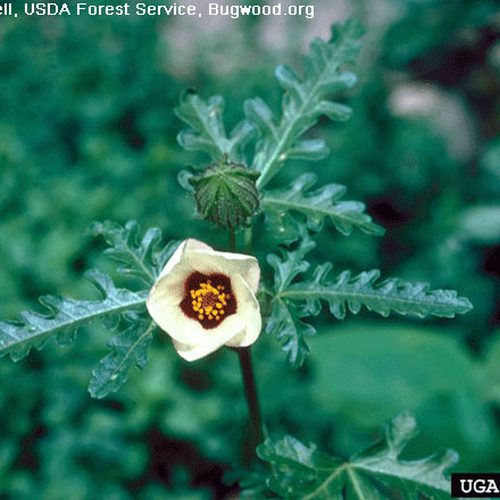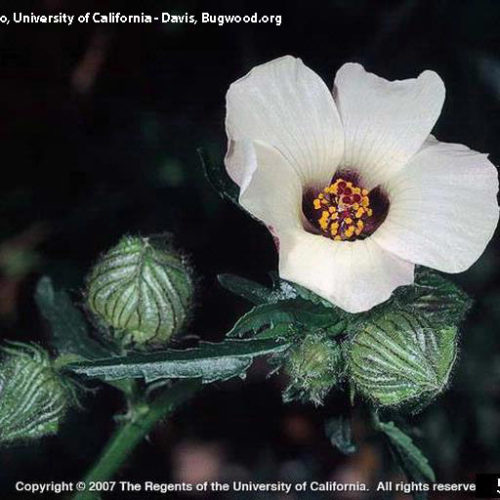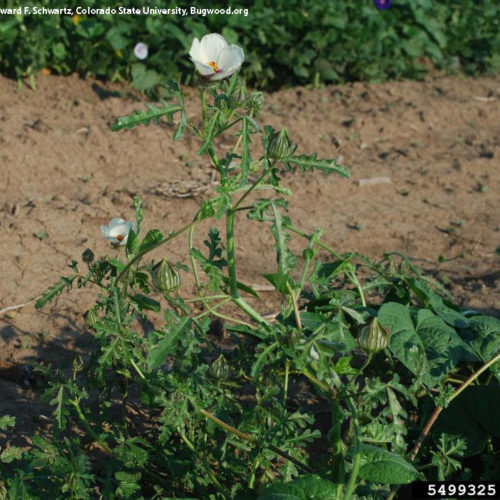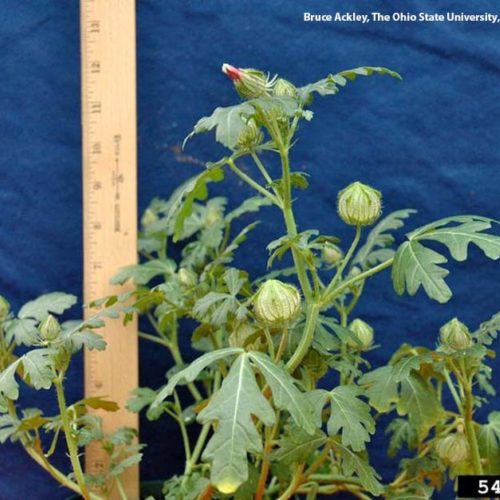Venice Mallow
Hibiscus trionum
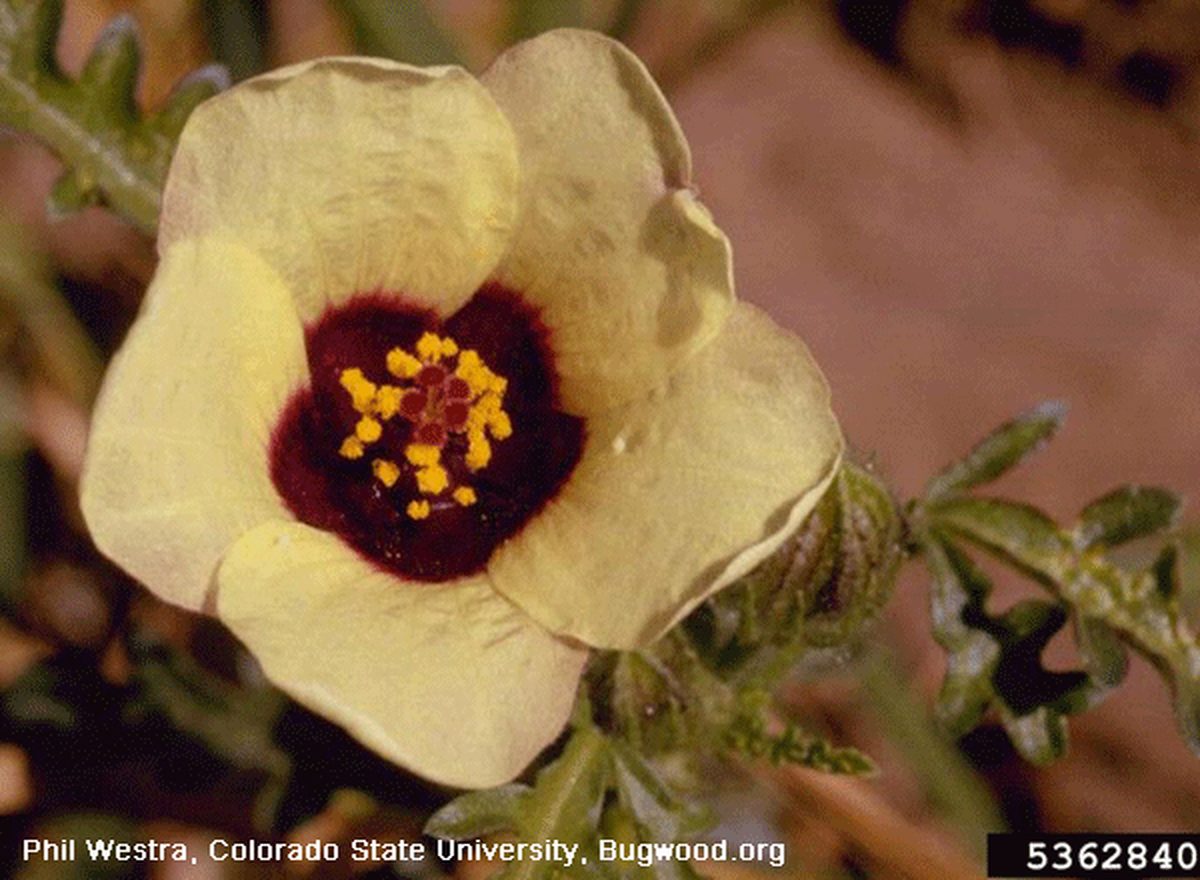
Family: Malvaceae
Other Scientific Names:
Hibiscus dissectus, Hibiscus vesicarius, Ketmia trionum, Trionum annuum, Trionum trionum
Other Common Names: bladder weed, bladder hibiscus, bladder ketmia, modesty, purangi, flower of an hour, shoofly
Weed class: noClass
Year Listed: 1998
Native to: Africa, Asia and Europe
Is this Weed Toxic?:
Not known to be
Legal listings:
This plant is on the quarantine list. It is prohibited to transport, buy, sell, offer for sale, or distribute plants or plant parts of quarantined species into or within the state of Washington or to sell, offer for sale, or distribute seed packets of seed, flower seed blends, or wildflower mixes of quarantined species into or within the state of Washington. Please see WAC 16-752 for more information on the quarantine list. For questions about the quarantine list, contact the Washington State Department of Agriculture's Plant Services Program at (360) 902-1874 or email PlantServices@agr.wa.gov.
Why Is It a Noxious Weed?
This plant is on the monitor list - it is not a listed noxious weed in Washington. Please contact the Washington State Noxious Weed Board to report locations or for more information.
How would I identify it?
General Description
This annual hibiscus plant usually grows to 8 to 20 inches tall.
Flower Description
White, 5 petals, with black to dark purple center, and bright yellow/orange pollen on the stamens
Leaf description
The leaves are divided into 3 segments, shaped like a very lobed and thin duck foot.
Stem description
Round, green to purple (depending on sun exposure), and sparsely covered in single or small tufts of short, stiff hairs
Fruit Seed Description
The seed pods look like light green paper lanterns. Inside is a bundle of many flattened seeds making a circle
Where does it grow?
Escaped from gardens, this plant prefers open areas, like agricultural fields and disturbed lots
How Does it Reproduce?
Seeds only
How Do I Control It?
Cultivation or cutting that cuts off the main plant from the taproot will kill the plant.



